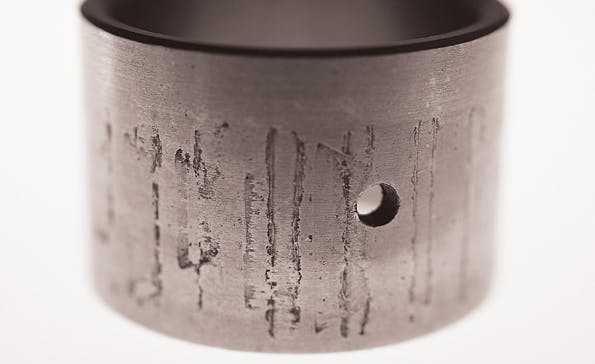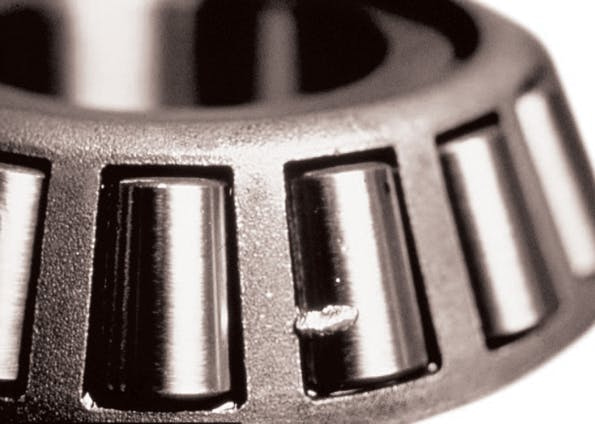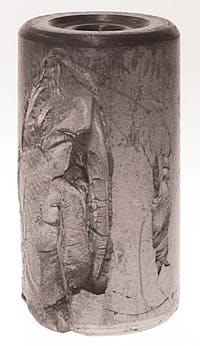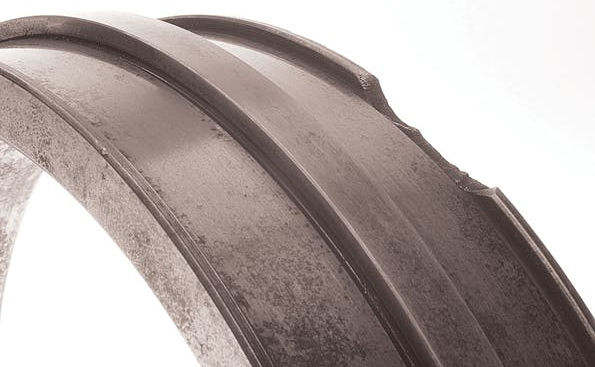Bearing Killers: Preventing the Causes of Bearing Damage
Bearing top "killers" or causes of damage and premature end of bearing life are insufficient lubrication, contamination, overload and improper handling and mounting.
Bearing top "killers" or causes of damage and premature end of bearing life are insufficient lubrication, contamination, overload and improper handling and mounting. They affect cylindrical, spherical, needle, tapered and ball bearings. When they strike, they force companies to pay for the repair and replacement of bearings and damaged adjacent components such as housings and shafts. Bearing killers also reduce the efficiency of plant operations, increase downtime and, in the worst case scenario, injure workers.
Here's how engineers can monitor and prevent these four bearing killers.
1. Contamination

What Is An Elbow and the Sub-categories of Elbows have corroded and corroded inner rings.
Foreign body contamination can also bring trouble to the bearing. Even a small amount of dust, dirt or debris can destroy the oil film and damage the bearing surface. Water is especially harmful to the lubricant. As little as 1% water in the grease or oil can significantly shorten bearing life.
Proper sealing is essential to prevent contamination. Bearing manufacturers can tell you what the proper match is between the seal and the application. They need to understand equipment performance, assembly requirements, lubrication, shaft orientation, and other environmental factors. The type of seal, the materials used and the installation method are also important.
The following are some general recommendations for selecting and maintaining seals.
â— Use seals that are appropriate for the environment and operating conditions.
â— Install external guards or procedures to avoid debris buildup on and around the seal.
â— Periodically inspect radial lip seals for flexibility, hardening, cracking and shaft contact.
â— Locate leaks and replace damaged seals as soon as possible.
â— Avoid removing excessive grease from lip seals. They may lose contact and effectiveness.
â— Be careful when using water, steam or compressed air sprays for periodic external cleaning. Many rotary seals cannot withstand steam or high pressure sprays. It is easy to damage seals and force contaminants into other cleaned equipment.
â— When disassembling large machinery, avoid using chains, wire rope or dirty slings for lifting that could scratch seal surfaces.
If friction surfaces are worn, resurface and grind them to their original specification finish and diameter.
In addition, follow these three best practices to reduce contamination.
1. When removing bearings for inspection, clean and dry them. Then, before storing them, coat them with oil or other preservative and wrap them in protective paper.
2. Collect and test oil or grease samples regularly. Ideally, they should have consistent properties. If they contain solid particles, determine their source and prevent further contamination.
3. Do not rely on filters alone to prevent contamination. Filters are demanding in demanding environments, and technicians need to plan for regular inspection and replacement.
Fine metals from sand, grinding or machining, and fine metals or carbides from gears can wear or lap rolling bodies and raceways. Abrasive particle wear also affects other machine components and accelerates seal wear, which can reduce performance. Some of the causes of fine particle buildup include improper cleaning of housings and parts, inefficient filtration or improper filter maintenance.
Hard particles that roll over bearings can cause pitting and bruising of rolling elements and raceways. Bruising can raise metal around the dent, which can act as a surface stress lifter, causing premature spalling and shortening bearing life. Metal chips or large pieces of dirt left behind after machining due to improper cleaning can trigger early fatigue damage. Internal debris can come from worn gears, splines, seals, clutches, brakes and joints, as well as improperly cleaned housings and damaged or spalled components.
Hard particles such as chips and metal fragments may also be wedged into the softer cage material and form grooves in the rolling element. So-called "grooving" can lead to incorrect rolling contact geometry and shorten the life of the bearing.
Moisture and water contamination can lead to bearing corrosion or erosion. If not adequately protected, the surface finish of the raceways and rolling elements can make them susceptible to corrosion. Corrosion is usually caused by temperature changes
or improper storage causing condensation to collect in the bearing. Equipment that has been idle for a long time is also susceptible to corrosion, which can quickly lead to severe spalling.
2. Inadequate lubrication
Inadequate lubrication is the main bearing killer. It can be divided into eight basic categories: overfilled, underfilled, incorrectly specified, mixed or incompatible, incorrect lubrication and spacing, degraded grease or oil, water contamination, and particle contamination.
OEMs and bearing suppliers typically specify the correct lubricant dosage, type, grade, supply system, replenishment interval, viscosity and additives for the bearing. They can also help select lubricants for bearings based on history, load, speed, seals, service conditions and life expectancy.
Manufacturers and distributors should also provide detailed recommendations on storage, shelf life, delivery, filtration and other precautions. Lubricant suppliers should be consulted if any conditions change, even those that may seem insignificant.
Mixing different grades and brands of grease or oil can be disastrous. Lubricants must be compatible in order to function properly over time. Some lubricants should not be mixed with other lubricants due to significant chemical differences in thickeners, base oils, additives and other ingredients.
Before changing lubricants, verify compatibility with your lubricant supplier. In some cases, it may require special testing. Allow time to remove all old lubricants from the system before suddenly switching to a new lubricant or additive. This is a good time to inspect lines, connectors, dispensers, pumps and seals and take any necessary corrective action.
Once a lubricant has been selected and used, always monitor it and the bearings for signs of failure. Monitor bearing temperatures continuously or at least periodically. If bearings are operated at temperatures in excess of 180°F, oil life may drop dramatically, even with the use of oxidation inhibitors.

Large particles wedged in the soft cage material created a groove.
High operating temperatures can be caused by high ambient or process temperatures and harsh operating conditions that increase rolling contact friction. Conversely, low ambient temperatures can also challenge lubricants, thickening them and causing them to flow improperly. Check with your bearing supplier for acceptable temperature ranges.
Bearing damage due to poor lubrication will typically follow four stages.
â— Discoloration or darkening of the bearing due to metal-to-metal contact, which can raise the temperature. Discoloration on races and rollers is common. In mild cases, discoloration is due to lubricant contamination of the bearing surface. In severe cases, the heat can discolor the metal itself.
â— Scratching or flaking of any kind indicates a serious lubrication-related problem that needs immediate attention. Look for signs of cutting into the metal or spalling of the metal.
â— Localized scratches are caused by hot spots, broken lubricant films, and direct contact between components. In tapered roller bearings, this can manifest itself as scratches on the large end of the roller and on the guide ribs of the retaining ring.
â— Localized high temperatures or accumulated wear can dramatically alter the bearing geometry or mounting clearance, resulting in bearing lock-up, which can lead to roller tilt, cage damage, metal transfer, torque or power loss, and complete bearing seizure.
If a bearing shows any of these signs, consult a technician or engineer to diagnose and resolve the problem. In most cases, the bearing must be repaired before it can be used again.
3. Improper handling and mounting
Technicians should use proper methods and tools when handling and mounting bearings, as the smallest dent or nick can destroy performance and reliability.
Many cases of premature bearing damage can be traced to improper storage. Therefore, bearings should be stored in corrosion-resistant packaging until they are ready to be mounted. If for any reason the bearings must be removed from their original packaging, use a preservative and be sure to repack the parts.
When mounting, technicians should use cleaning tools in a clean environment and should not wipe any preservative off the bearings.
Avoid damaging the bearing components, especially the cage. They are usually made of mild steel, bronze or brass and can be easily damaged by improper handling or mounting.
Record keeping is also important. Document all maintenance with the date, equipment model and serial number, bearing assembly and serial number (if applicable), and manufacturer. Include comments on housing or shaft repairs and other replacement parts. These records may be essential in determining bearing performance trends, defining service intervals, and planning future maintenance. Records also form a baseline for troubleshooting equipment problems and bearing damage analysis.
Careless handling when removing the outer race from the housing or hub may leave burrs or high spots in the outer race seat. If the tool gouges out the housing seat, it will leave raised areas where it was gouged out. If these high spots are not scraped or smoothed out prior to reinstalling the outer ring, they will transfer through the outer ring and create corresponding high spots on the inner diameter of the outer ring. This can increase rolling contact stresses and can shorten fatigue life, lead to spalling, or in extreme conditions lead to part fracture. The direct effects of gouges and deep marks may include roughness, vibration and noise in the bearing.

Overloading this cylindrical roller bearing can crack the roller surface.
Damage caused by improper handling, mounting or disassembly includes outer ring dents, inner ring retaining edge fractures, outer ring retaining edge fractures, roller pitch indentations, and dents or dings in the raceway (Brinell indentations). Each of these can be serious. Once the root cause is determined, the damaged part should be replaced or repaired.
Proper alignment during installation is important because a static unaligned bearing will have a shorter life. How much shorter depends on the degree of misalignment. If the misalignment is too large, the load will not be distributed along the rolling elements and raceways. Instead, the load is concentrated on only some rollers or balls and races, which may lead to fatigue. Adjacent surfaces, bases and shoulders and corresponding fillets and undercuts are sized to support and transmit forces and must be within the limits specified by the manufacturer.
Bearing settings include free and mounted radial internal clearance (RIC), axial play, and, in some equipment, distribution of axial preload. Incorrect clearances can increase torque, stress, cage damage and overheating.
4. Overload
Overloaded bearings are those that exceed their rated load, speed or temperature design limits. The greater the overload, the shorter the bearing life. It can also damage bearing components.
While overloads can be caused by improper operation, they can also stem from a mismatch between the bearing and the application. Warning signs of overload include noise and vibration, elevated temperatures, metal debris in lubricants and filters, and reduced performance. Another symptom of overload is fatigue spalling - pitting or spalling of the bearing material. Spalling primarily affects the raceways and rolling elements of the bearing. Other indications include.
â— Fracture of the rollers.
â— Spalling.
â— Outer ring subshell fracture.
â— Hard lines or plastic deformation at roller edges and unribbed raceway contact. These lines appear black and can be felt with a fingernail or pointed tool.
â— The metal changes to form the bottom cut of the ribbed raceway.

Spherical roller bearing inner ring is broken due to improper installation tools causing small retaining edge.
The overloaded bearing must be repaired or replaced or you risk further damage and more serious consequences.
Thanks to improvements in design, education and training by OEMs and users, massive bearing damage is less common today. However, the need to understand the key causes of bearing damage and how to prevent them is just as urgent. Take care to adequately lubricate, prevent contamination, avoid overloads, and properly handle and mount bearings. Doing so will protect these vital components from damage, increase production, extend service life and save time and money.
